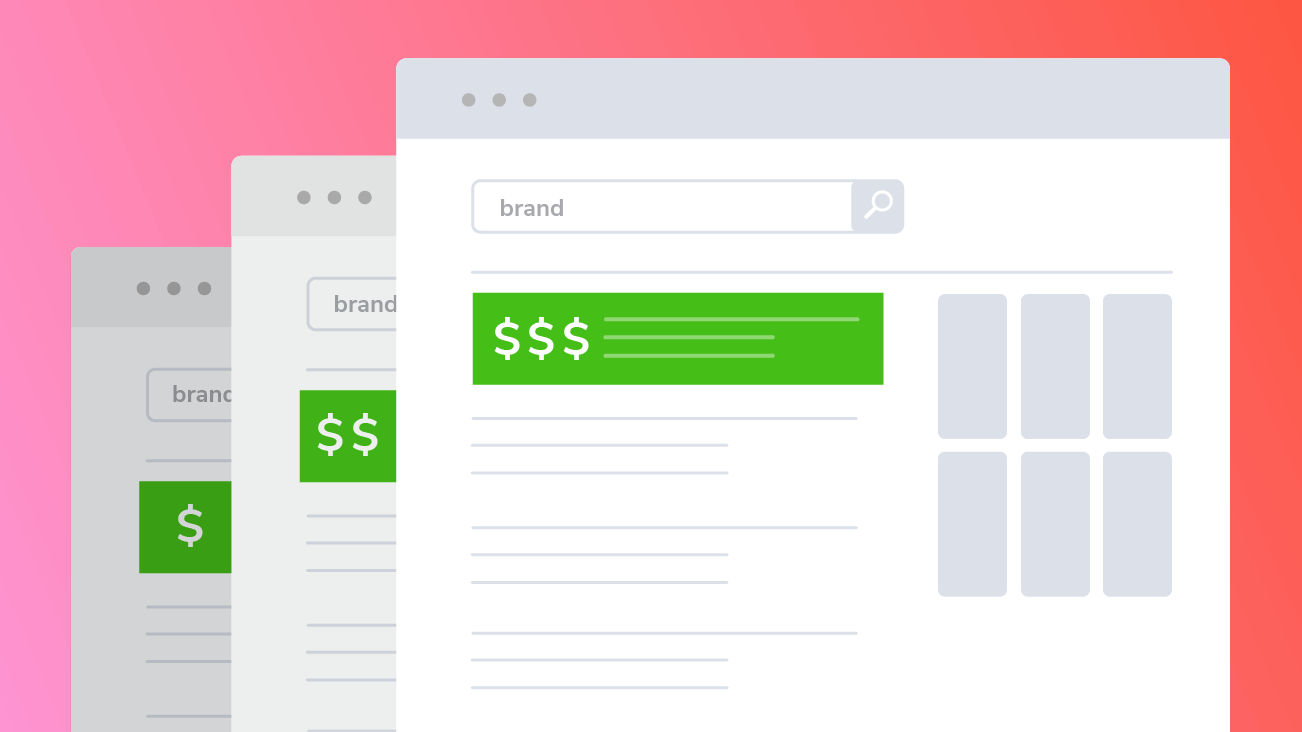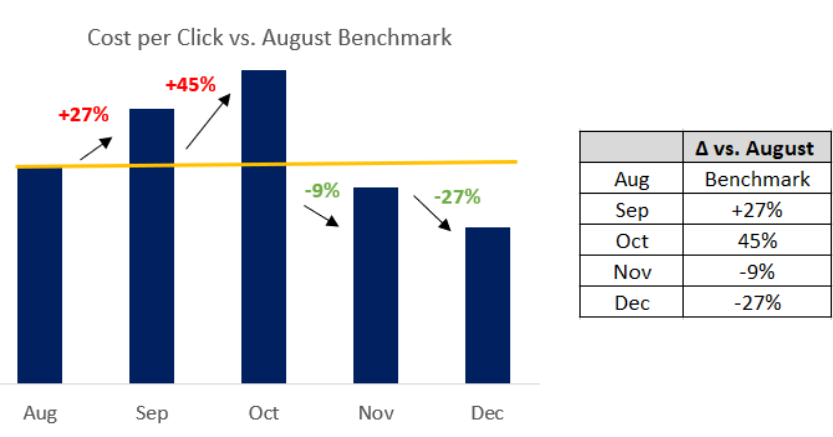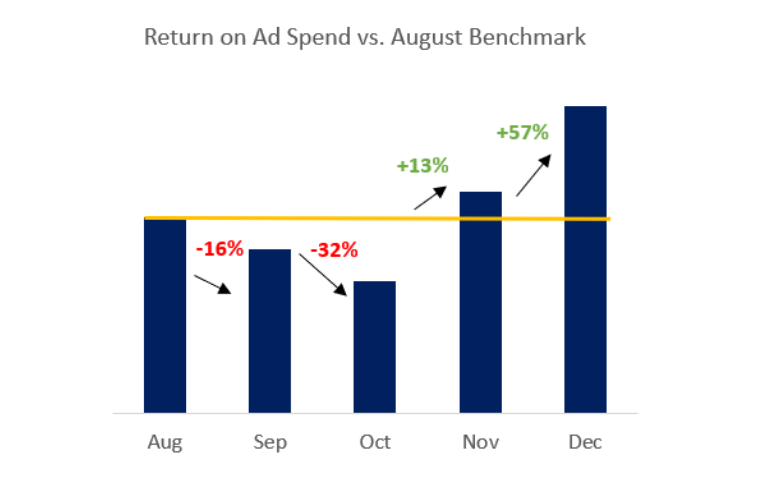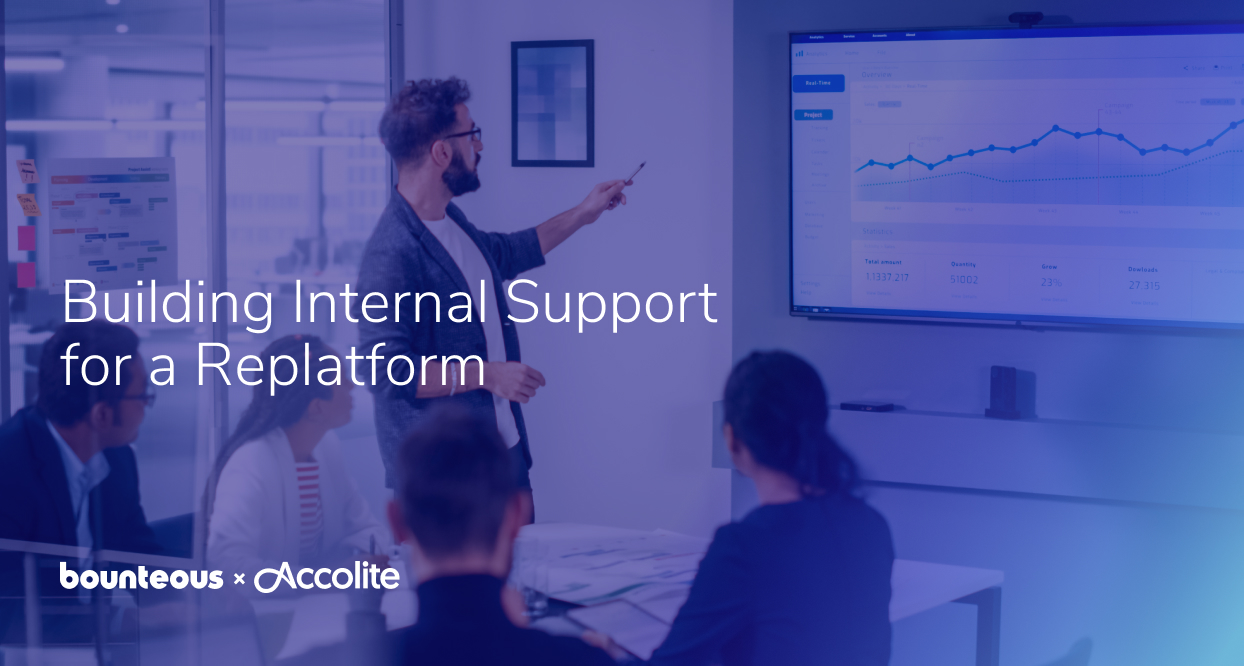The Rising Cost of Brand: What to Do When Brand CPCs Rise

As search marketers, budget management is one of our primary jobs. We keep an eye on monthly spend, campaign performance, and keyword bids. It’s not unusual to see daily or weekly fluctuations, but long-term trends can mean something bigger is happening that requires a closer look.
A few months ago, we started to see brand cost-per-clicks (CPCs) creep up for one of our large, fast-casual restaurant retailers with 450+ locations. The four keywords in their exact match brand campaign were suddenly seeing month-over-month CPC increases.
Nothing had changed in our management or in overall brand volume so we took a closer look at bidding strategies. So, why were brand keywords suddenly costing more?
A Manual Strategy to Fix Expensive CPCs
For those interested in just the results, let’s take a look at our mini-case study. We set out with a goal to reduce brand CPCs after cost had been increasing for several months.
We found that changing from an automated, “maximize conversions” bidding strategy to a manual CPC strategy led to lower CPCs.
Just how low? In month one, we saw a 9 percent reduction in cost vs. the previous CPC target, and by month two our costs were reduced by 27 percent. Less money, less problems.
The Data & Details Behind Our Bid Management Change
August began like a normal month. Kids were back in school and the weather had begun to change. We were managing a Google Ads account for a large, fast-casual restaurant retailer with strong brand awareness and significant market share.
Their CPCs for the “Brand_Exact” campaign cost pennies on the dollar. They were seeing a healthy triple-digit return on ad spend (ROAS).
Life was grand and the client was happy.
When September came, Brand costs began creeping up. Nothing major — a penny here or there — but by the end of the month, CPCs were up 27 percent from August. The following month, CPCs had risen an astonishing 45 percent.
With over 100K impressions/week, any increase in cost caused a noticeable increase in spend.
In November, we decided to take action.
Our team first took a look at possible contributing factors for increased costs.
We ruled out an increase in competitors by reviewing Auction Insights. The data showed we were the lone player and our brand terms had a 99.89 percent top of page rate and 98.31 percent market share.
If it wasn’t our competitors driving up bids, we thought maybe seasonality could be causing it.
We benchmarked Brand CPCs against Non-Brand terms and found that only Brand was growing at a higher rate. Why were increased costs seen just for our few exact match brand terms?
We turned our attention to our campaign’s bidding strategy
Bingo.
Changing from Automated to Manual Bidding Led to Lower CPCs
Our Brand campaign was set to “Maximize Conversions”— an automated bid strategy used by most campaigns in our account. On November 2nd, we changed our strategy for this exact-match campaign to Manual CPC with an enhanced manual CPC bid.
We were curious to see what would happen if we didn’t rely on Google’s automatic algorithms.
The results were nearly instant. We saw a 9 percent reduction compared to the August benchmark and pre-CPC inflation period. (An even starker 38 percent cost reduction if you compare November vs. October). The days of month-over-month CPC increases had ended.
In December, the trend continued and CPCs dropped by 27 percent from where they were in August, generating, even more, cost savings for our client.
Note: The graph and table below show the delta in CPCs, relative to the August benchmark (yellow line), not month-over-month changes.

In November and December, clicks cost less, while conversions, revenue and impression share all remained the same.
With cheaper CPCs came higher ROAS — where our return on ad spend had been sharply declining during our period of high CPCs, we saw that after we changed our strategy, our return in November and December out-performed our August benchmark.

Celebrations ensued.
If you manage Google Ads accounts imagine how happy your client would be with a 57 percent increase in ROAS!
Ruling Out Other Factors, Just to Be Sure
With so many moving pieces in the Ads ecosystem, it’s sometimes hard to pinpoint direct cause-and-effect situations. We needed to rule out several other contributing factors, just to make sure our bid strategy change was the result of lower CPCs.
We reviewed average position, device breakdown, absolute top of page bid, quality score and impression share. Nothing changed between the months that would have led to increased CPCs.
As part of our analysis, our team brainstormed other possible reasons why Brand CPCs could increase:
- More competition
- Seasonality
- Shift in device usage
- Keywords capturing broader search terms
- Increase in Avg. Position
- Increase in Absolute Top of Page IS
- Just ‘cause
Considerations for Your Bid Management Strategies
If you’re seeing a sudden increase in brand costs, evaluate your bid strategy. See if changing to a less-automated solution would drive a greater return for you or your clients.
It should be noted that this test was done on a targeted Brand campaign consisting of four, exact-match keywords for a highly-recognizable, national brand. The tight scope of the campaign eliminated a lot of noise that could have impacted our results.
Test for yourselves and see if changing your automated bid strategy make sense. If you’re managing campaigns for a large client and notice brand CPCs consistently increasing, rule out other factors then consider using a manual CPC bid strategy and lower those CPCs.
Never Stop Testing
We saw great results by changing our bid strategy and are already planning Phase Two. We want to continue maximizing revenue while driving down those CPCs.
Manual bidding as we’ve applied it here isn’t a scalable, long-term solution for other brand or non-branded campaigns. It’s why Google has automated strategies.
We’re planning to test and deploy automated bid strategies, using upper and lower bounds defined in the advanced settings, to see how we can improve CPCs across the entire account.


